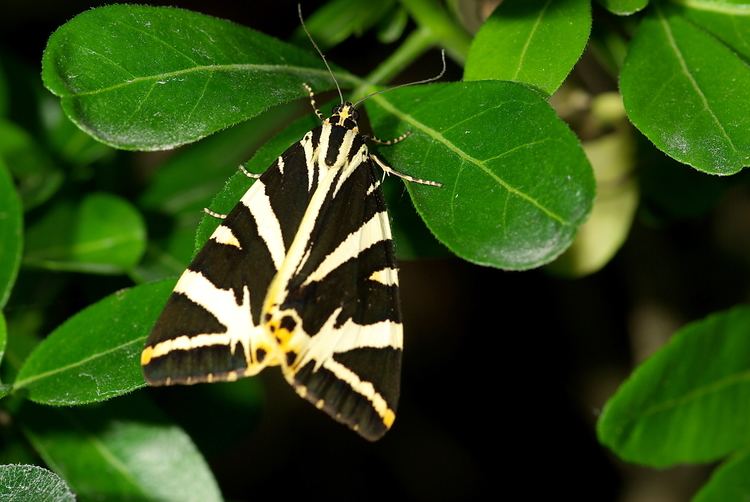Rank Species | Genus Euplagia Higher classification Euplagia | |
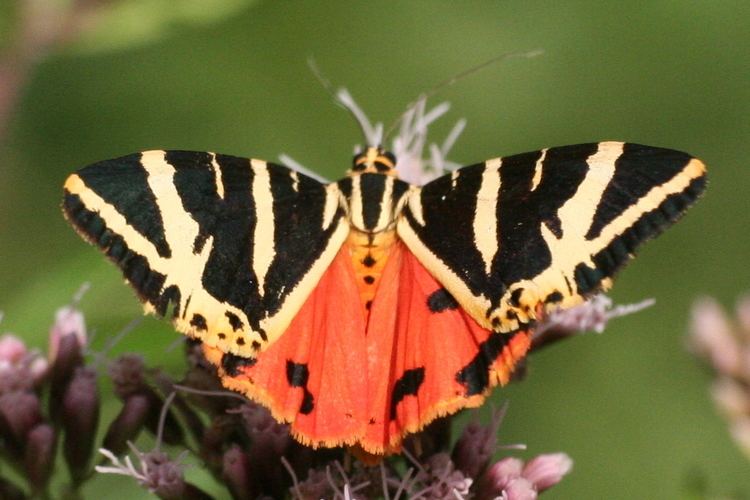 | ||
Similar Euplagia, Butterflies and moths, Callimorpha, Insect, Scarlet tiger moth | ||
Euplagia quadripunctaria
Euplagia quadripunctaria, the Jersey tiger, is a day-flying moth of the family Erebidae. The adult wingspan is 52–65 millimetres (2.0–2.6 in), and they fly from July to September, depending on the location. They tend to fly close to Eupatorium cannabinum, where they are hard to notice because of their camouflage.
Contents
- Euplagia quadripunctaria
- Russischer b r euplagia quadripunctaria beim flug
- Distribution
- British Isles
- Subspecies
- References
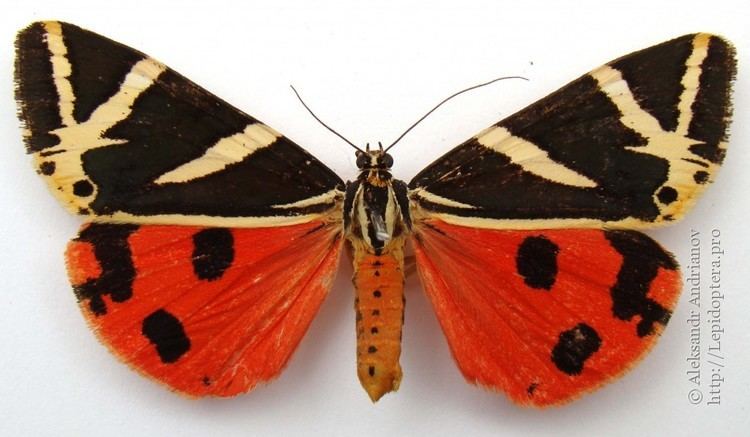
The larvae (caterpillars) are polyphagous, feeding from September to May on nettles (Urtica) and raspberries(Rubus), dandelion (Taraxacum), white deadnettle (Lamium), ground ivy (Glechoma), groundsel (Senecio), plantain (Plantago), borage (Borago), lettuce (Lactuca), and hemp-agrimony (Eupratoria). The insect overwinters as a small larva.
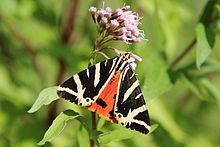
Large groups of adults of subspecies E. q. rhodosensis can be found on occasion aestivating (sheltering from the summer heat) in Petaloudes, on Rhodes, in a place that has become known as the 'Valley of the Butterflies'.
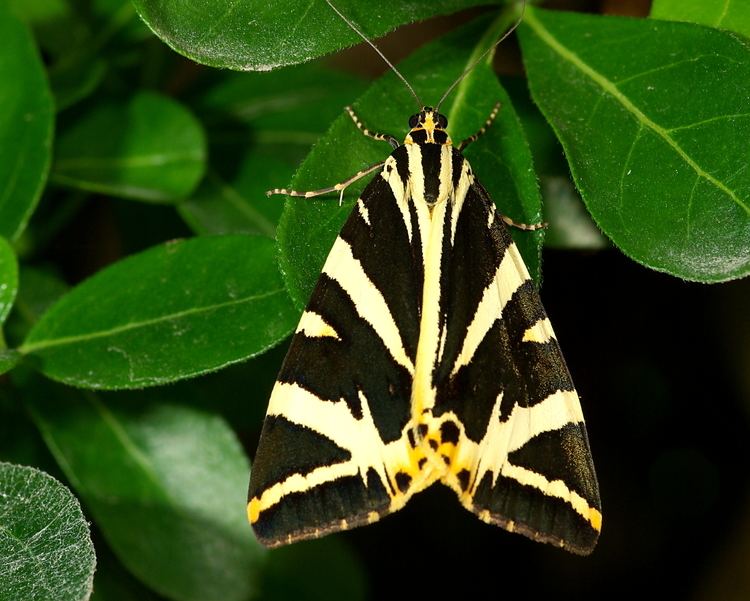
Russischer b r euplagia quadripunctaria beim flug
Distribution
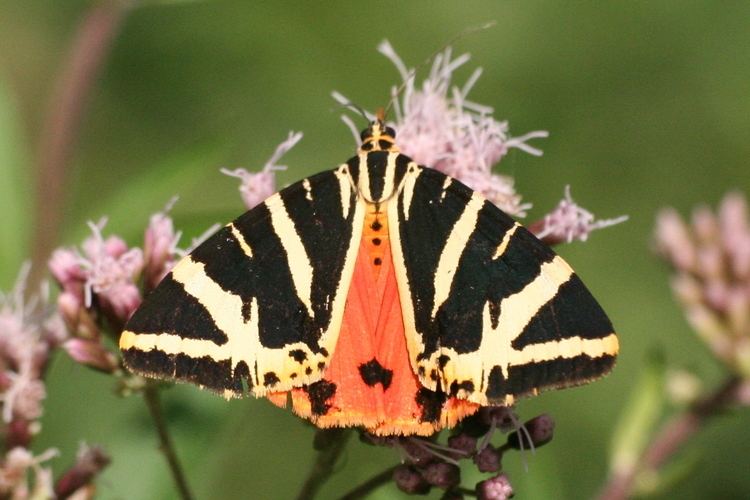
Euplagia quadripunctaria is widely distributed in Europe from Estonia and Latvia in the north to the Mediterranean coast and islands in the south. It is also found in West Russia, South Urals, Asia Minor, Rhodes and nearby islands, the Near East, Caucasus, South Turkmenistan, and Iran (Dubatolov, 2010). Individuals are known to migrate northwards from their regular breeding grounds during the summer.
British Isles
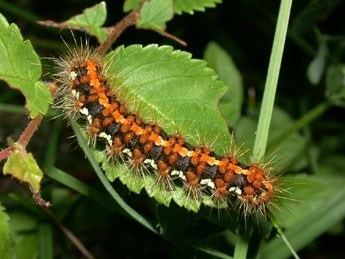
Aside from being frequent in the Channel Islands (whence its common name comes), this species was rarely seen in the British Isles in Victorian times. It was described by Kirby as, "a great rarity in the South of England, except one locality in Devonshire." Since then however it has spread more widely in Devon and Cornwall, and has recently been seen more frequently in southern England, especially on the Isle of Wight, in northern Kent, and south London. They have been seen regularly and in numbers every year in London since 2004, so it is probable that they have established a breeding colony.
Subspecies
